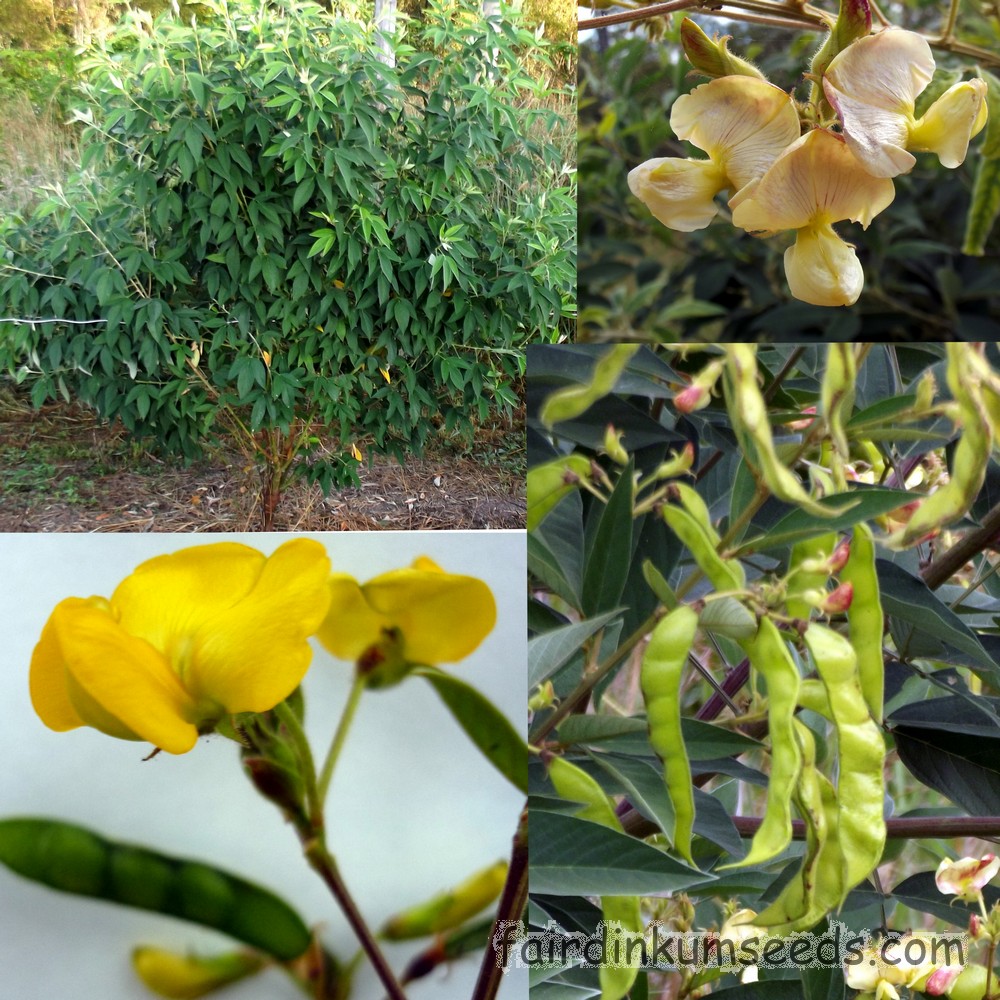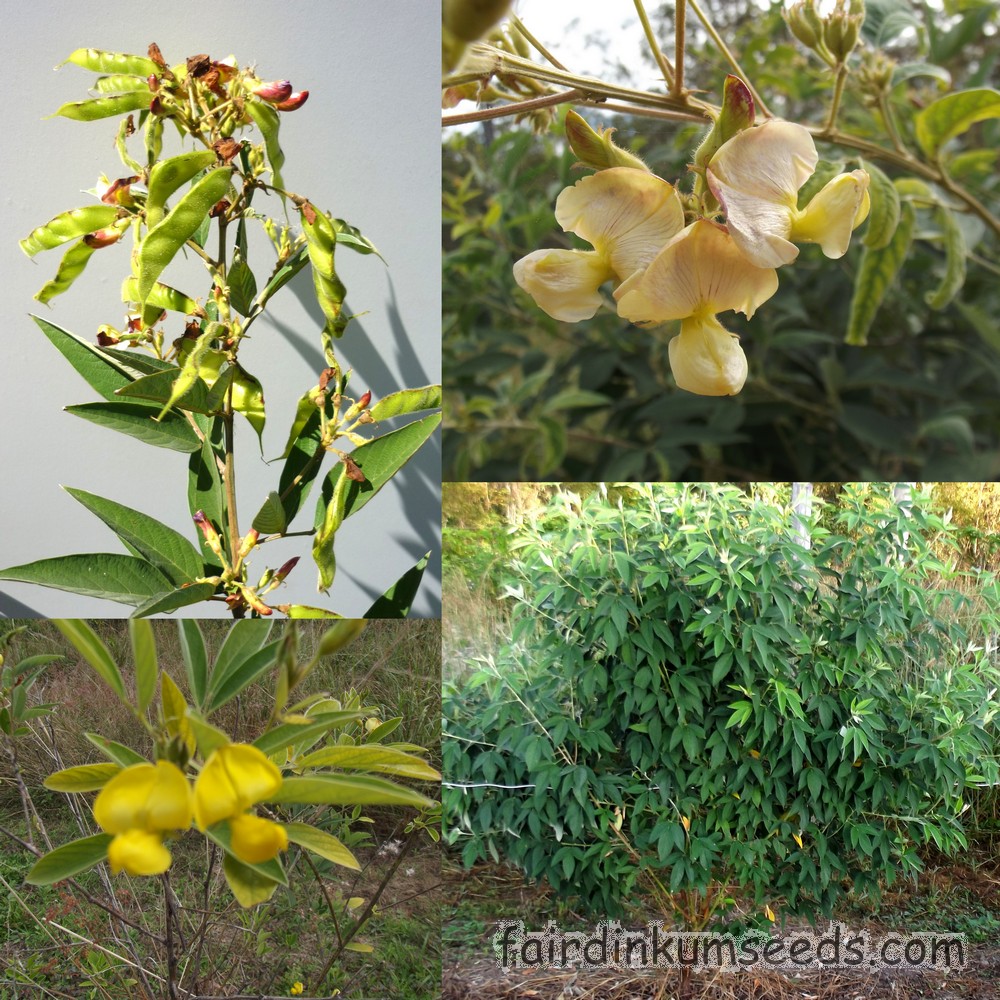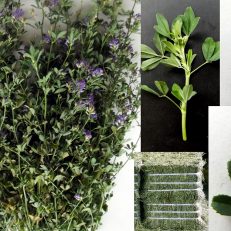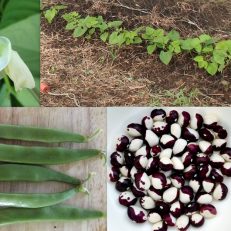Please read text!
Pigeon Pea Cajanus Cajun Seeds
Packet of 20+ home grown seeds!
For years I was growing the two main heirloom varieties grown in extensively in India, Africa, Central America, and various other countries.
Both had their good points, and I was super happy with them.
Then I got some of this Indian variety in trade with a customer and after trialing this fella side by side against mine for a few years now I have culled all the other types out.
This one just outperforms them both in every single way.
Much bigger yields, smaller overall plants, they respond well to pruning bushing out really tightly, and they even survive here for several years as perennials.
Most surprising is the drought hardiness once established.
During the recent drought when my other Pigeon pea plants died completely from the roots up, these guys just dropped their leaves from the top down and went dormant, only to survive and reshoot with that last lot of rain.
I honestly thought they were dead and they hadn’t had any water or rain for months, full sun, bone dry dusty rubble soil.
I’m so impressed with the hardiness that this is the only variety of Pigeon pea I will be growing now going forward.
Like the others this guy is a great choice as a food, or as a green manure crop.
They have been domesticated and grown as a food crop for at least 3,500 years ago and their versatility is one of the reasons why.
You can pick them young and use them like any other bean, or wait till the fill out a bit and shell them like normal peas, or even wait a bit longer and use the dried peas in soups, stews casseroles, curries, lentil dishes, vege burgers, flat bread, I’ve even had a Japanese style mochi made with these guys that was really quite good.
Massively popular everywhere they are grown, not just as a nutritious productive food crop, but also for a multitude of other uses.
They can be used as a pioneer species as they sink down nice deep roots, holding the top soil together, and fixing nitrogen and feeding the surrounding plants at the same time.
They can be cut back really hard after a harvest, and the leaves and stems are a great slow release fertilizer and mulch.
Very nutritious plant us for humans and animals alike.
Praised as a fodder for cows, goats and sheep.
Our chooks and guinea pigs love them, as do the bloody king parrots, and the plants themselves are great trellises to grow Vines up!
If you plant a climbing bean or creeping vine at the base of each plant its a great combination and you don’t need a trellis!
The vine gets a boost from the nitrogen fixing roots, and the pigeon pea is slightly stressed so produces more flowers and beans per plant.
Known as ambrevade, andu, anduzeiro, Angola pea, caiano, cajan pea, Congo pea, dau trieu, dhal, feijao boer, frijol de palo, gandul, gandule bean, guandeiro, guandu, guandul, guandu, gude, gungo pea, kacang gude, no-eyed pea, no-eye pea, pigeon pea, pi kula, pois-congo, pois cajan, pois d’Angole, Puerto Rico Bean, pwa kongo, quinchoncho, red gram, rорох, straucherbse, tropical green pea, umukunde, Cajanus flavus, Cajanus indicus, or even Cytisus cajanus.
Whatever you wanna call it, its a very cool bean!
Grown by us organically, no nasties, no chems, no problems!!!






